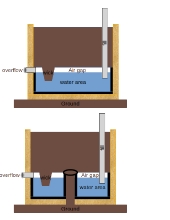




 4
4








 1
1




 3
3




Our inability to change everything should not stop us from changing what we can.








A human being should be able to change a diaper, plan an invasion, butcher a hog, conn a ship, design a building, write a sonnet, balance accounts, build a wall, set a bone, comfort the dying, take orders, give orders, cooperate, act alone, solve equations, analyze a new problem, pitch manure, program a computer, cook a tasty meal, fight efficiently, die gallantly. Specialization is for insects.
-Robert A. Heinlein

 2
2




Our inability to change everything should not stop us from changing what we can.




A human being should be able to change a diaper, plan an invasion, butcher a hog, conn a ship, design a building, write a sonnet, balance accounts, build a wall, set a bone, comfort the dying, take orders, give orders, cooperate, act alone, solve equations, analyze a new problem, pitch manure, program a computer, cook a tasty meal, fight efficiently, die gallantly. Specialization is for insects.
-Robert A. Heinlein








I'm only 64! That's not to old to learn to be a permie, right?




Country oriented nerd with primary interests in alternate energy in particular solar. Dabble in gardening, trees, cob, soil building and a host of others.
 1
1





 1
1




Our inability to change everything should not stop us from changing what we can.

|
I found this tiny ad in my shoe
Learn Permaculture through a little hard work
https://wheaton-labs.com/bootcamp
|



